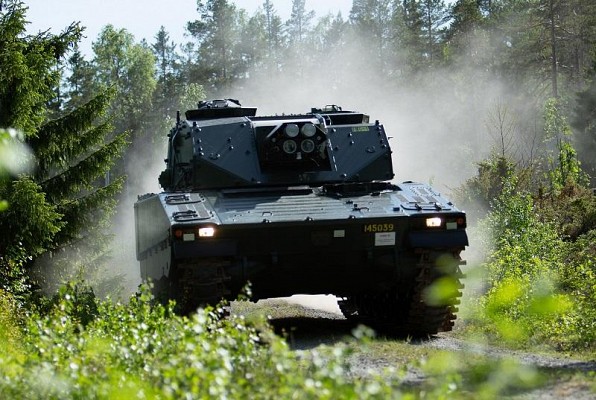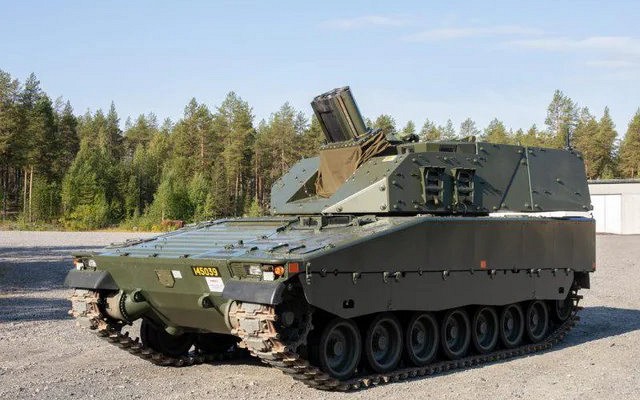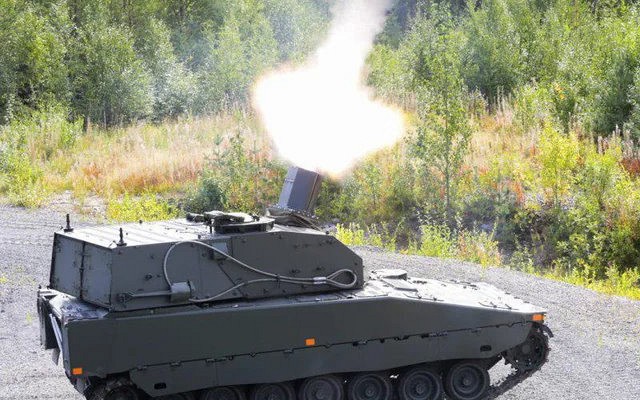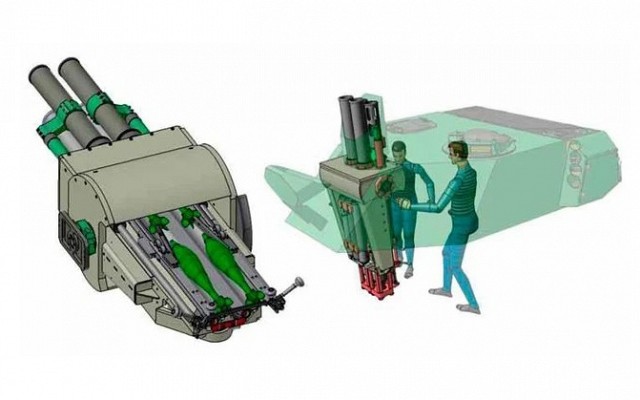CV90 Mjölner
Granatkastarpansarbandvagn 90
Overview

CV 90 Mjölner
Forward view of CV 90 Mjölner on the move.
Source: BAe systems -
© Copyright lies with original owner
2nd contract for 20 awarded 2023
Mjölner
Description
Introduction
The CV 90 Mjölner is a modern era self-propelled mortar of Swedish origin. The indirect fire capability is rather similar to the CV 90 AMOS, which was trialed earlier. The Mjölner is a less automated system that trades in direct fire capability for more ammunition for indirect fire.
Design
The Mjölner is a turret system that was developed for the CV 90 tracked chassis, but can reportedly be modified for installation on various types of chassis. The turret uses a combined block of two mortar tubes with two loading tubes. These loading tubes contain arms that carry shells from under armor protection upwards for muzzle loading the mortar tubes. The large turret carries 56 shells in the bustle, while more shells can be stowed in the hull. The mortar tubes are horizontal when on the move, but are not for direct fire use. The turret can move left and right, but has no 360 degree traverse.
Firepower
Mjölner is an indirect fire system that has no direct fire gun-mortar capability. Having two barrels and two loading arms rate of fire is rather high. Four shells can be fired in less than 8 seconds. Maximum rate of fire is 16 shells per minute. Sustained rate of fire is 6 shells per minute. The high rate of fire has two main advantages. There are more shells on target before the troops in the target area can take cover or move out of the area. Second, an effective volume of fire can be achieved while quickly vacating the firing position before counter battery fire comes in.
Protection
Protection level of the Mjölner as ordered by Sweden is likely similar to the CV 90 Mark I. Add-on armor packages can be attached to the new turret. Such packages already exist for the CV 90 chassis. The vehicle is operated under full armor protection. Although the loading mechanism includes manual activities, these are carried out from within the vehicle. There is no open roof, increasing protection from airburst weapons. The armor is rated against small arms fire and shell splinters. Interestingly photos show the Mjölner to lack smoke grenade launchers.
Mobility
The Mjölner as ordered by Sweden are based on existing CV 90 Mark I chassis. These likely retain their 525 hp Scania DS-14 diesel engines. Maximum speed if rather high at 70 km/h. Ground pressure is rather low, making the vehicle suitable for Scandinavian terrain.
Users
The Mjölner has been adopted by Sweden. A first batch of 40 was contracted in 2016 and seemed to be operational by 2021. These vehicles are based on existing CV 90 Mark I chassis, probably undergoing refurbishment. A second batch of 20 was ordered. With a total requirement reportedly of 80 vehicles. In Swedish service the vehicle is called Granatkastarpansarbandvagn 90, abbreviated as Grkpbv 90.





